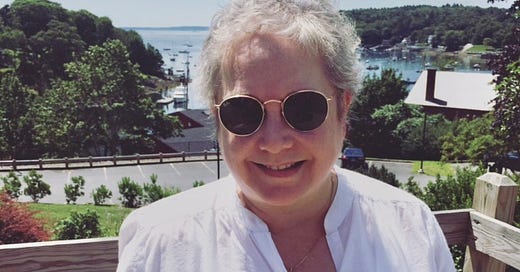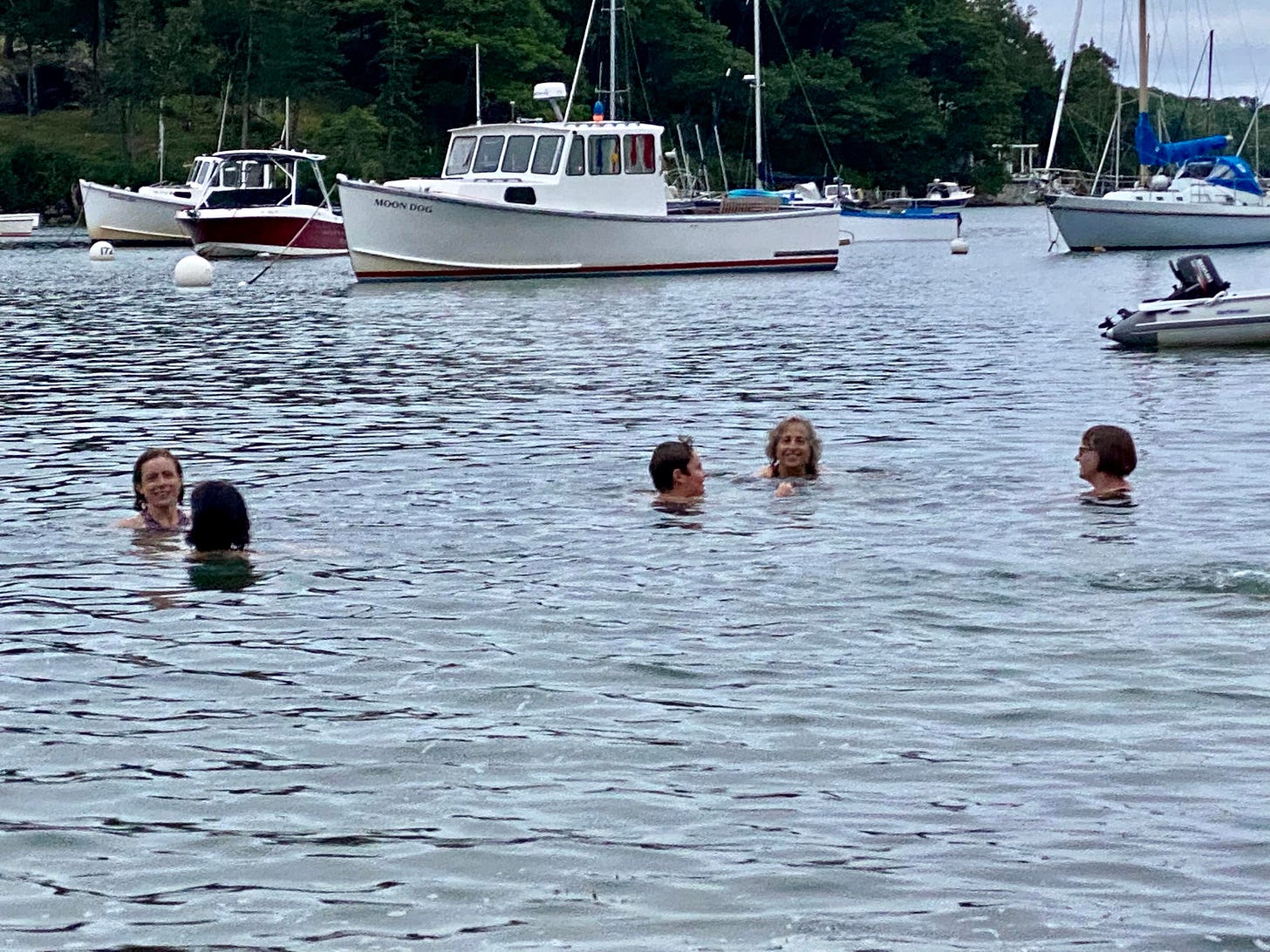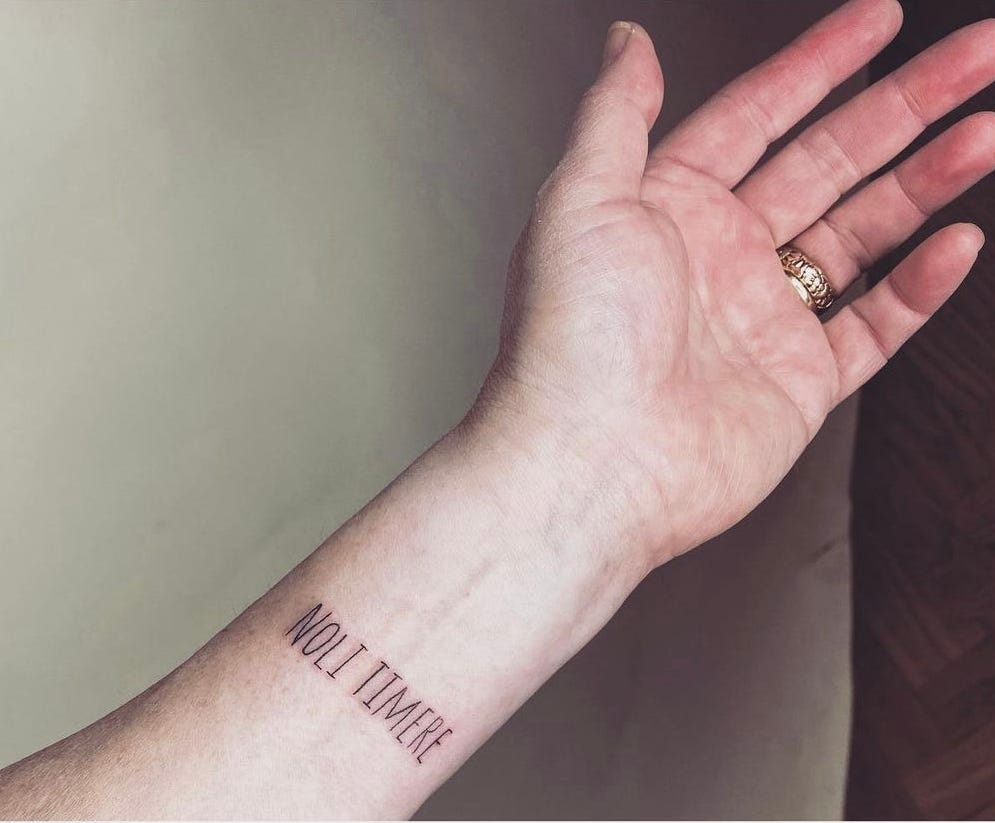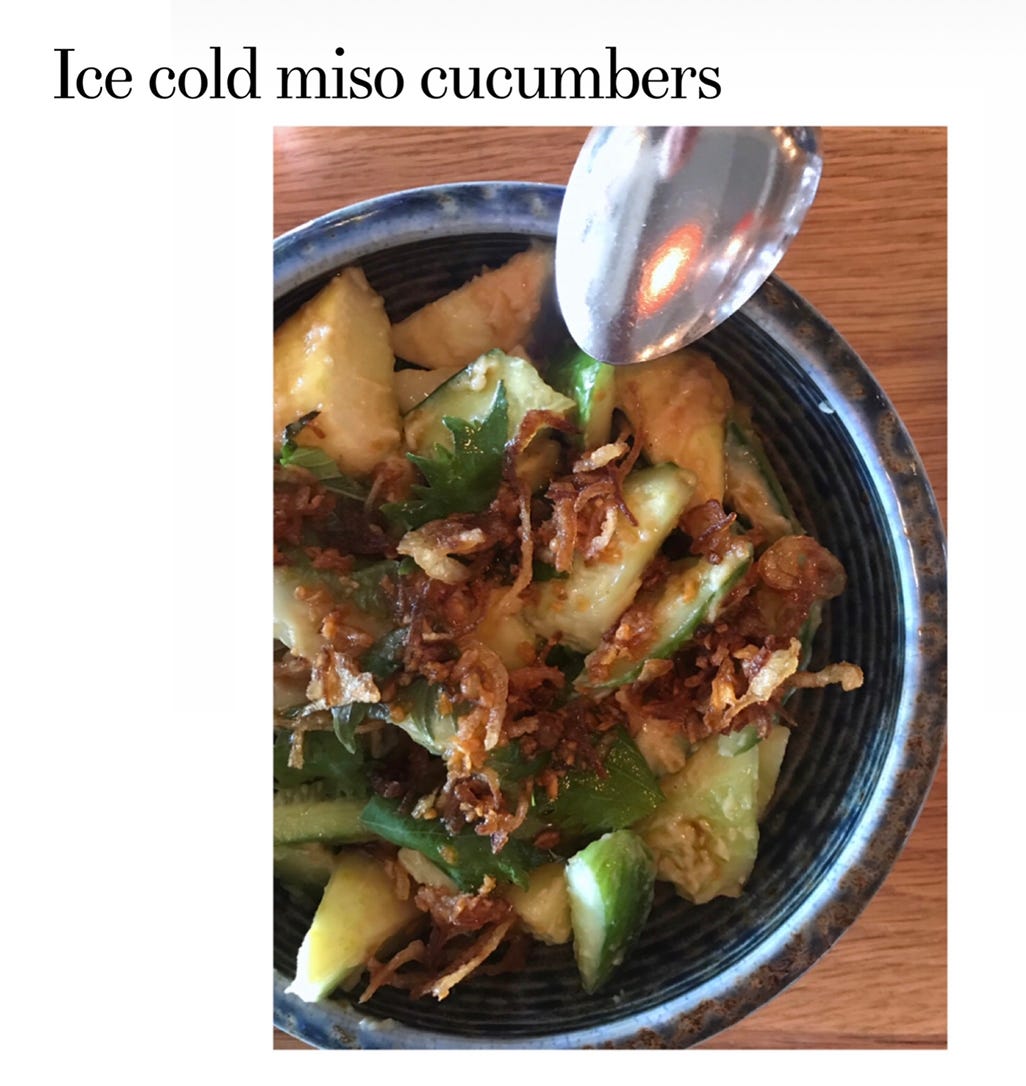First: to every one of my readers, I apologize for disappearing into the waves, as it were. Last Saturday, we had a visit from one of my favorite authors (and now that I know her, favorite people), Katherine May and her family, and on Sunday made the drive up to midcoast Maine to do a day-long workshop together on Monday, and on Tuesday evening, a conversation, both of which were held at beautiful Barnswallow Books overlooking Rockport harbor in Maine.
Most of the workshops (actually all of the workshops) I lead are for writers both new and seasoned; usually, I lead master classes, and classes on getting to the core of one’s memoir (every memoir has a core), revision workshops, and workshops on permission and getting beyond creative paralysis. My workshop with Katherine was going to be a different sort: it was going to be on finding comfort in impossible times. And while what I do not know about the universe could fill volumes, I do know this much to be true: we are living in impossible times.
Our workshop group was comprised of every possible sort of person: there was a beautiful (stunning, actually) woman in her eighties who is the person I would like to be when I grow up, another woman who had just completed a very long cycling trip on her own, others who were chiseling out time for themselves against wild schedules. All of us — myself included — had, at core, one question: how do we do this? How do we live through such times when the world is tugging at us, and also do the things that we need to to care for ourselves? At the start of the workshop, Katherine broke us out of the circle we naturally arranged ourselves in, and told us to find spaces in the barn where we were working together that better suited us. Some of us climbed into the loft, others moved their chairs to the door and sat half in/half out, some sat almost entirely out of view. I moved myself into a tight corner, surrounded on both sides by children’s books. It was something I hadn’t noticed I tend to do: I squeeze myself into tight, small spaces, and I always have. I am reminded of a book I worked on as an editorial director, two decades ago: The Not So Big House, by Sarah Susanka, which posited that humans tend to find comfort and security in smaller spaces, which I find to be entirely true.
But I also am, and always have been, drawn to the broad expanse of water. My friends who are astrology types roll their eyes and say Well yeah, of course, it’s because you’re a double water sign. (Cancer + Pisces Rising) If there is a body of water anywhere — a lake, a pond, a pool, a sea, an ocean — I want to be near it, on it, or in it. Just looking at it brings my erratic, arrhythmic heart rate down and drops my blood pressure, and I’ve never understood why until Katherine told us: it has been shown that seeing the horizon actually lowers one’s blood pressure. But it’s more than that for me.
In my writing workshops, I often talk about the importance of anchors — those things that allow a writer to take their readers on a journey that may (or may not) involve time shifts and voice changes and narrative hoop-jumping. An anchor is the thing that secures the reader, that tethers them to a foundation and provides a sense of ineffable security, even if that security is ephemeral and fleeting. The Pacific Coast Trail (PCT) in Cheryl Strayed’s Wild is an anchor around which Cheryl’s story of grief and transformation is wrapped; it functions as a character unto itself. When I wrote Poor Man’s Feast (the memoir), it was the table that anchored the reader to a story of abandonment. In Katherine’s Wintering, it is the knowledge of okay-ness that anchors the reader to the author’s story of fallow times, and the understanding that often, sadness is where one needs to be, despite living in a world that demands we be FINE. In my life away from work, it is water that is my personal narrative anchor; it secures and feeds me even though, disrespected, it can also be massively dangerous.
After our reading and conversation on Tuesday night, we planned to go for a dip in Rockport harbor. Katherine, who is a cold-water swimmer, had brought her bathing suit, as had several of our workshoppers and reading attendees. I had my suit with me as well, and had intended to go into the water. At the very last minute, I decided not to because: fear. I am dealing with some heart issues right now —- wonky rhythms and odd gurglings and bubblings and a doctor’s suggestion that I don’t do anything strenuous until I get the results of a test next week —- and so, I didn’t. I stood on shore and watched with roaring envy as my friends walked out into the bracing ocean, settled themselves down, and reveled in the healing saltwater.
I looked down at the tattoo I have on my left arm: Noli Timere. Be not afraid.
When I return to Rockport next month, I won’t be.
A non-recipe recipe.
My garden is exploding right now: we came home to at least half a bushel of cucumbers waiting to be harvested. This is my summertime go-to comfort dish, mostly because it involves all the flavors I love (miso, shiso, crispy shallots, toasted unhulled sesame seeds, rice vinegar, cucumber) and almost no work.
Smash and then roughly chop however many cucumbers you have at your disposal (I usually start with three or four medium ones, approximately 2 pounds), having removed the seeds if they’re large. Toss with 2 tablespoons of brown rice miso, 2 tablespoons light rice vinegar, and a sprinkling of toasted sesame seeds. Refrigerate for at least an hour, Top with a handful of crispy shallots and torn shiso leaves and serve. Truly delicious: serving on a scoop of warm white rice.








